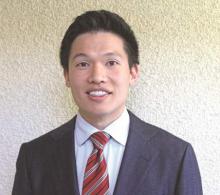In patients with indeterminate thyroid nodules, routine gene expression classifier testing may not meet standard definitions of cost efficacy relative to conventional care at many treatment centers, according to a decision-tree analysis performed with data from a tertiary treatment center.
In this analysis, gene expression classifier (GEC) testing was associated with a small gain in health benefits, measured in quality adjusted life-years (QALY), but at a much higher cost than conventional care, according to Dr. James X. Wu of the University of California, Los Angeles. The data were presented at the annual meeting of the American Association of Endocrine Surgeons (AAES).
Management of thyroid nodules indeterminate for malignancy after fine needle aspiration, which occurs in up to 30% of patients, is a challenge, according to Dr. Wu. Cancer rates in these patients can be as high as 30%, and often benign and malignant indeterminate nodules are indistinguishable. Conventionally, surgical resection is recommended to avoid missing a cancer diagnosis. However, uniform thyroid lobectomy means that 70% or more of lesions excised will be benign.
GEC testing is a relatively new molecular test that helps guide therapy in these individuals. The high negative predictive value of this test allows the test to reliably predict when patients have benign disease, giving them the option of being observed rather than undergoing surgery, explained Dr. Wu. In this study, the goal was to determine whether GEC testing has the potential to be cost effective, defined as a ratio of added cost to QALYs gained of less than $100,000/QALY relative to conventional treatment.
The decision-tree model was constructed on 2 years of GEC testing performance data prospectively collected at UCLA. In this model, the assumption was made that patients would be observed if the GEC test was negative but would undergo thyroid resection if the gene expression classifier test was suspicious.
Applying the UCLA dataset to the model, the expected cost for conventional management in the reference scenario was $11,119 to produce 22.15 QALYs, according to Dr. Wu. Routine GEC testing produced an additional 0.01 QALY but cost $1,197 more. This translated into an incremental cost-effectiveness ratio of $119,700/QALY, which exceeded the common $100,000/QALY threshold for cost efficacy.
The main determinants of cost effectiveness were the cost of the gene expression classifier test, the rate of malignancy in patients with indeterminate thyroid nodules, and cost of thyroid lobectomy.
More favorable costs for gene expression testing could be generated by plausible alterations of key clinical factors. This included lowering the cost of the GEC test itself or raising the cost of thyroid lobectomy. For example, the GEC testing became cost effective with the parameters used if the test was less than $2,460 or the cost of thyroid lobectomy exceeded $12,160.
In addition, malignancy rates influenced the relative cost efficacy of gene expression classifier testing. Centers with lower rates of cancer get more value from routine GEC testing than do centers with high rates of cancer, because more patients avoid surgery with testing. At UCLA, the malignancy rate was 24%, and could pay as much as $2,460 per test to remain cost-effective. Institutions with a malignancy rate less than 24% would have a higher cost threshold.
Indeed, even though routine gene expression classifier testing was not found to be cost effective using the assumptions of this study and data from UCLA, on probabilistic sensitivity analysis, it was found to be cost effective in 53.2% of simulations. Dr. Wu suggested the same analyses should be performed at centers using their own data to accurately assess cost effectiveness. Given the wide variation in important variables, particularly the malignancy rate in indeterminate nodules, the results from one institution cannot reliably predict the cost effectiveness at a separate treatment facility.
“Our conclusion is that every center needs to audit themselves to find out whether it’s truly cost effective and not blindly trust that it’s 100% cost effective across the board.” Dr. Wu reported. He noted that gene expression classifier testing, which has been used for 2 years at UCLA, is likely to be continued to be used but with a focus on making the test more cost effective by finding ways to use it more selectively.


